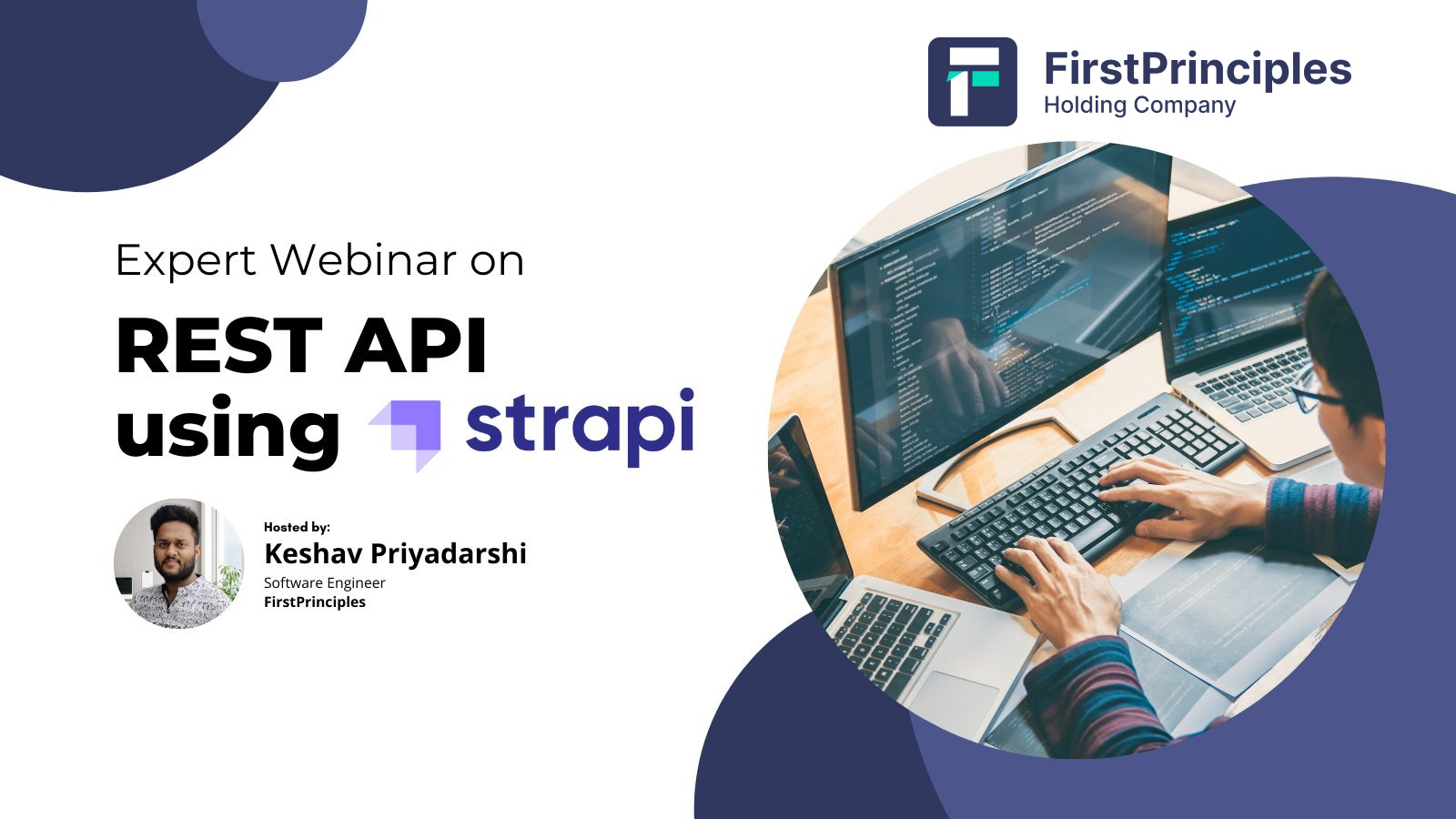Home > Saas Resources > Everything You Need to Know About REST API using Strapi

Everything You Need to Know About REST API using Strapi

Strapi, a headless CMS, is great to power your backend through APIs. From managing the content structure from a user-friendly admin panel to accessing and editing API files anytime, Strapi is known to give developers the freedom to use their favorite tools and frameworks. Apart from the fact that Strapi is highly customizable and supports a wide range of integrations, it’s also editor-friendly as it allows them to easily manage and distribute their content.
In this webinar, Keshav Priyadarshi (Software Engineer at FirstPrinciples) will first talk about the Strapi and quickly compare it with the other headless CMS. He will then give insights into how developers can create REST API that will allow easy access to content types through API endpoints that Strapi automatically creates.
Quick Overview
- Headless CMS
- Introduction to Strapi
- Strapi vs other Headless CMS
- Rest API Development
- Why Strapi is for your next SaaS Product?
Webinar Questions
This is a compilation of questions asked by the attendees during the webinar session

Content-type Builder, a core plugin of Strapi, is accessible by default when the application is in a development environment. It allows admins to create and manage content types:
1. Collection types - content-types that can manage several entries,
2. Single types - content-types that can only manage one entry, and
3. Components - a data structure that can be used in different collections and single types
Content-type builder allows you to manage one content type or component at a time. These have several fields designed to contain specific kinds of data (such as text, password, number, email, boolean, relation, JSON, etc.)
UI customization of the admin panel is helpful to better reflect your brand identity:
1. Access URL, host, and port - modified through the server configuration
2. To replace logos, favicons, extend theme and translations, etc - Configuration object
3. WYSIWYG editor can be replaced or customized
4. Forgotten password email - can be customized with variables or a template
For more details, you can read through this Strapi documentation
There’s no denying the fact that using open source platforms for SaaS products comes with security concerns.
1. The code of opensource projects is available to anybody which is an advantage to flag potential exploits, however, there’s also a possibility of hackers using this and targeting organizations that are slow to patch the applications
2. Considering the frequency with which enterprises develop and release software and the fact that single proprietary applications often comprise multiple open source components, companies can face difficulty in managing open source licenses
3. Another threat can occur due to developer malpractices such as copy-pasting code from open source libraries, email manual transfer of open source components across teams, etc.
Yes! Strapi allows users to utilize its easy-to-customize authentication system. This empowers users to create several types of user groups & control permissions leveraging diverse strategies such as ACL, Basic Authentication, or OAuth 2.0.
Strapi allows developers to manage all users from one place which makes this platform efficient for backend developers as they need to change access privileges on the go constantly. Additionally, Strapi uses popular databases MySQL and PostgreSQL, which reduces the worry of storing user credentials.
Strapi also comes along with a great set of plugins that can be easily installed on your new or existing application, some of them are Google Analytics integration, LDAP support, and Swagger integrations, thus making this platform one of its kind. Strapi is highly suitable for SaaS as it is futuristic, and it is evolving constantly by adding more plugins to extend its functionality.
About the Speaker

Keshav Priyadarshi
Keshav Priyadarshi is currently a Software Engineer at FirstPrinciples.
With experience in Core Java, JavaScript, PostgreSQL, TypeScript, MERN, GraphQL, Keshav is an expert in writing effective business logic. He is a pro at translating UX Designs into functional web apps using React JS and has a wide range of experience in making some awesome SaaS products.



